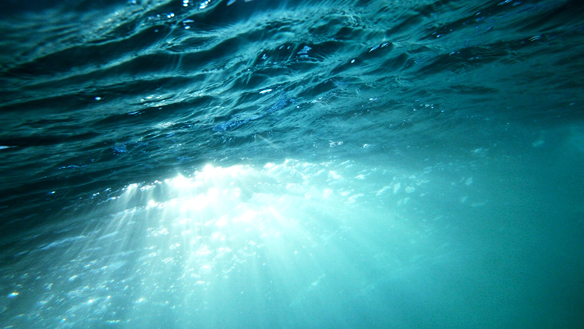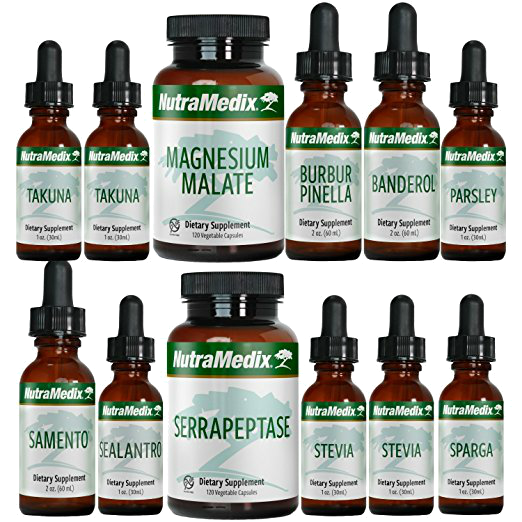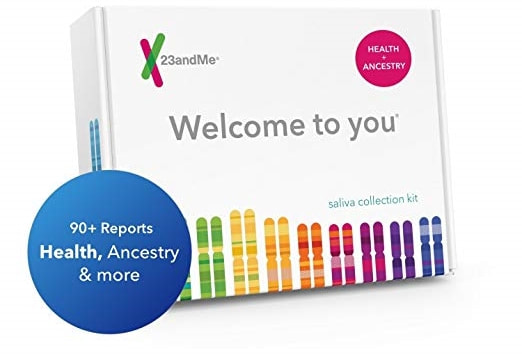Marine Phytoplankton: Improves Memory & Cognition, Strengthens Immune System, Combats Inflammation, And More
November 8, 2014 in Herbs/Natural Remedies by Shelley M. White
"In one drop of water are found all the secrets of the ocean." - Kahlil Gibran
There are long chains, which are the hardest to find, and short chains of omega-3 essential fatty acids EPA and DHA. Marine Phytoplankton is the highest plant source of the long chain omega-3 essential fatty acids, but its abundant health benefits do not end there. If you are wondering what exactly Marine Phytoplankton are, they are tiny creatures in the sea responsible for providing nutrition, and therefor life, to thousands of different ocean species. When taken as a supplement, phytoplankton is rich in ten amino acids, omega-3 fatty acids, vitamin A, B vitamins
and minerals such as calcium, copper, iodine, manganese, magnesium, potassium and zinc. As you can see, there is a legitimate reason why I have included Marine Phytoplankton as a vital supplement in your journey to optimum health and a vibrant life.
Certain groups of people are at high risk for developing an omega-3 deficiency including vegetarians, and especially vegans. Typically, when you adopt such diets, your body has difficulty in obtaining ideal EPA and DHA levels, since these omega-3s are absent from plant derived foods. Some will argue that flax seeds and oil contain the omega-3 alpha-linoleic acid (ALA), and they are right. However, ALA from flax seeds or flax seed oil is converted very slowly into EPA and DHA. For these reasons, people who eat little or no cold-water fish may wish to determine
their omega-3 status by supplementing with marine phytoplankton.
If you think you have escaped this one because you consume high amounts of fish, think again. Surprisingly, many who consume high quantities of fish also suffer from sub-optimal omega-3 status. Our world’s increasingly industrialized food chain now produces a substantial portion of its harvest from mega fish-farms, where the unnatural diet of soy and grain meal the fish are given greatly diminishes the omega-3 content of their flesh. Farmed fish are completely dependent on their feed.
If it does not contain EPA and DHA, the fish will not contain it in high levels like wild fish. In the wild, fish obtain EPA and DHA from marine algae and phytoplankton. Then, larger fish consume then and so on. In fact, one of the greatest ironies in the world is that the single celled marine phytoplankton supports and feeds the largest mammal known to mankind, the majestic blue whale.
Disturbingly, large quantities of farm raised fish containing only minute traces of EPA and DHA fatty acids have basically become the normal. This is why it is so important to stay informed on such information, and to adjust your diet and supplementation accordingly. According to a 2008 sampling survey of farmed fish, tilapia and catfish have much lower concentrations of omega-3s, very high ratios of omega-6 to omega-3, and higher amounts of saturated and monounsaturated fats than omega-3. This is a perfect example of just how unhealthy a seemingly healthy
meal can be. As time goes on, this only seems to get worse. We are not doomed, as long as we use our brains to stay informed and avoid what I like to call “health illusions.”
Other benefits that can help those with Lyme disease and many other chronic illnesses:
Sources
There are long chains, which are the hardest to find, and short chains of omega-3 essential fatty acids EPA and DHA. Marine Phytoplankton is the highest plant source of the long chain omega-3 essential fatty acids, but its abundant health benefits do not end there. If you are wondering what exactly Marine Phytoplankton are, they are tiny creatures in the sea responsible for providing nutrition, and therefor life, to thousands of different ocean species. When taken as a supplement, phytoplankton is rich in ten amino acids, omega-3 fatty acids, vitamin A, B vitamins
and minerals such as calcium, copper, iodine, manganese, magnesium, potassium and zinc. As you can see, there is a legitimate reason why I have included Marine Phytoplankton as a vital supplement in your journey to optimum health and a vibrant life.
Certain groups of people are at high risk for developing an omega-3 deficiency including vegetarians, and especially vegans. Typically, when you adopt such diets, your body has difficulty in obtaining ideal EPA and DHA levels, since these omega-3s are absent from plant derived foods. Some will argue that flax seeds and oil contain the omega-3 alpha-linoleic acid (ALA), and they are right. However, ALA from flax seeds or flax seed oil is converted very slowly into EPA and DHA. For these reasons, people who eat little or no cold-water fish may wish to determine
their omega-3 status by supplementing with marine phytoplankton.
If you think you have escaped this one because you consume high amounts of fish, think again. Surprisingly, many who consume high quantities of fish also suffer from sub-optimal omega-3 status. Our world’s increasingly industrialized food chain now produces a substantial portion of its harvest from mega fish-farms, where the unnatural diet of soy and grain meal the fish are given greatly diminishes the omega-3 content of their flesh. Farmed fish are completely dependent on their feed.
If it does not contain EPA and DHA, the fish will not contain it in high levels like wild fish. In the wild, fish obtain EPA and DHA from marine algae and phytoplankton. Then, larger fish consume then and so on. In fact, one of the greatest ironies in the world is that the single celled marine phytoplankton supports and feeds the largest mammal known to mankind, the majestic blue whale.
Disturbingly, large quantities of farm raised fish containing only minute traces of EPA and DHA fatty acids have basically become the normal. This is why it is so important to stay informed on such information, and to adjust your diet and supplementation accordingly. According to a 2008 sampling survey of farmed fish, tilapia and catfish have much lower concentrations of omega-3s, very high ratios of omega-6 to omega-3, and higher amounts of saturated and monounsaturated fats than omega-3. This is a perfect example of just how unhealthy a seemingly healthy
meal can be. As time goes on, this only seems to get worse. We are not doomed, as long as we use our brains to stay informed and avoid what I like to call “health illusions.”
Other benefits that can help those with Lyme disease and many other chronic illnesses:
- EPA and DHA derived from a plant source
- Equipped with nutrients that provide the body what it needs to grow new, healthy cells
- Antioxidant support
- Ramps up Your Energy
- Strengthens Immune Response
- Helps the Body with Natural detoxification
- Anti-inflammatory support
- Cardiovascular support
- Aids in Digestive function
- Cognitive health
- A Plant Source of Protein
- Alkalizes the body
Sources
- "Pure Healing Foods." Pure Healing Foods. N.p., n.d. Web. 8 Nov. 2014.
- "Radiant Health Is Within Your Reach." Herbs, Chinese Tonic Herbs, Radiant Health from Ron Teeguarden. N.p., n.d. Web. 8 Nov. 2014.
About the author
Shelley is the former Editor-in-Chief of Public Health Alert, and a health writer for various sources including Collective Evolution, MindBodyGreen, Natural News, and more. She is trained in herbalism, diet and nutrition, bach flower remedies, and herbal materia medica.
@Shelley_M_W
@Shelley_M_W
latest posts
tags
Disclaimer: The information on this website is not a substitute for professional medical advice.
Always consult with your treating physician before altering any treatment protocol.
Always consult with your treating physician before altering any treatment protocol.








